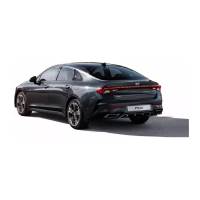Driving your vehicle
1785
Economical operation
2. This device must accept any
interference, including interfer
-
ence that may cause undesired
operation of the device.
Le prsent appareil est conforme
aux CNR d'Industrie Canada applica
-
bles aux appareils radio exempts de
licence. L'exploitation est autorise
aux deux conditions suivantes:
1. l'appareil ne doit pas produire de
brouillage, et
2. l'utilisateur de l'appareil doit
accepter tout brouillage
radiolectrique subi, mme si le
brouillage est susceptible d'en
compromettre le fonctionnement.
Radio frequency radiation exposure
information:
This equipment complies with FCC
radiation exposure limits set forth
for an uncontrolled environment.
This equipment should be installed
and operated with minimum dis
-
tance of 8 in (20 cm) between the
radiator (antenna) and your body.
This transmitter must not be co-
located or operating in conjunction
with any other antenna or trans
-
mitter.
Economical operation
Your vehicle's fuel economy depends
mainly on your style of driving,
where you drive and when you drive.
Each of these factors affects how
many miles (kilometers) you can get
from a gallon (liter) of fuel. To oper
-
ate your vehicle as economically as
possible, use the following driving
suggestions to help save money in
both fuel and repairs:
䳜 Drive smoothly. Accelerate at a
moderate rate. Don't make "jack
-
rabbit" starts or full-throttle
shifts and maintain a steady
cruising speed. Don't race
between stoplights. Try to adjust
your speed to the traffic so you
don't have to change speeds
unnecessarily. Avoid heavy traffic
whenever possible.
Always maintain a safe distance
from other vehicles so you can
avoid unnecessary braking. This
also reduces brake wear.
䳜 Drive at a moderate speed. The
faster you drive, the more fuel
your vehicle uses. Driving at a
moderate speed, especially on the
highway, is one of the most
effective ways to reduce fuel con
-
sumption.
䳜 Take care of your tires. Keep
them inflated to the recom
-
mended pressure. Incorrect infla
-
tion, either too much or too little,
results in unnecessary tire wear.

